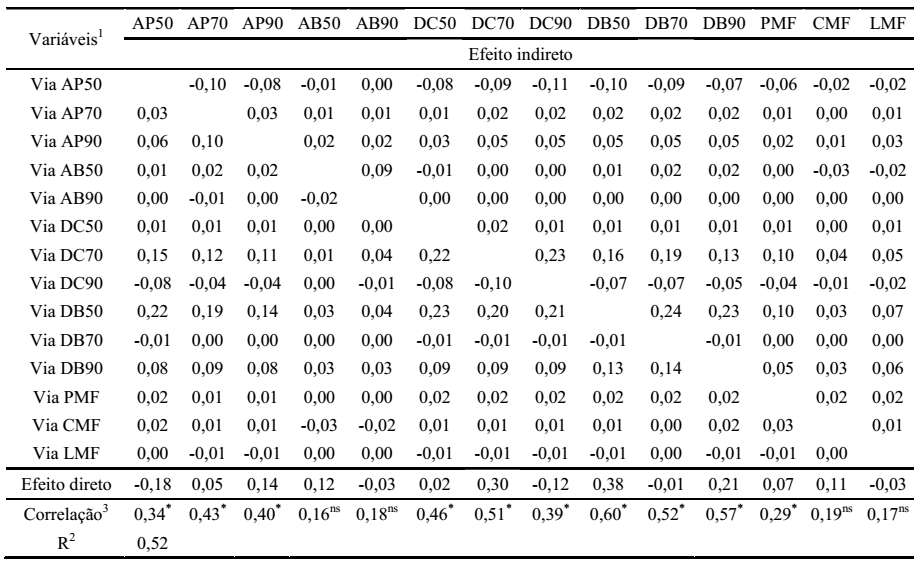ABSTRACT:
This study aimed to identify the relationship between morphological variables and production variables in bell pepper plants derived from seeds of different physiological levels. The experiments were carried out in a randomized block design with eight replications in a protected setting at Universidade Federal de Santa Maria. Treatments included three lots of hybrid Tiberius seeds and one lot of Rubi Giant seeds during Spring-Winter and Autumn-Winter season with different levels of physiological quality as shown by vigor and germination tests. The following characters (variables) were measured: plant height, first fork height, stem diameter, and stem diameter below the first fork after 50 days, 70 days and 90 days of transplanting, average weight of fruits, average production per harvest, total production, average fruit length, and average width of fruits. Next, for each level of vigor was estimated the correlation matrixes, multicollinearity diagnosis, and then path analysis, considering the total production as the main variable.Plants derived from high-, low- and medium vigor seeds whose first fork diameters were greater after 50 days and 70 days of transplanting are more productive during Spring-Winter seeding. Coefficients of correlation and effect of low magnitude were identified in vigor levels (being high, low, medium, and extremely low) during Autumn-Winter season, indicating a weak relationship between cause and effect of explanatory variables measured on total fruit production of bell pepper.
Keywords:
Capsicum annuum L; Path analysis;Vigor; Yield.









